Hi Everyone! We are on the final leg of our Tasmanian Travels. We have two full days left in Tasmania. One of those days is a road trip through the Huon Valley region and the other is out to Bruny Island.
Coningham Cottage
Our home base for the next few days is in a lovely old home in Coningham, and looking out on to the waters of the North West Bay. We cannot make ourselves go out to dinner while we have these gorgeous views and also so much excellent produce on our doorstep. So, every night is a wine, Huon Valley salmon, Bruny Island cheese, bread and fruit night. Our favorite meal. The Huon salmon in this region is some of the best that I’ve ever had. While we sit outside we enjoy watching black Cygnet swans float by and the bright blue Fairy Wren flitting around in the bush in front of us, as well as the white cockatoos which noisily nest in the trees overhead.
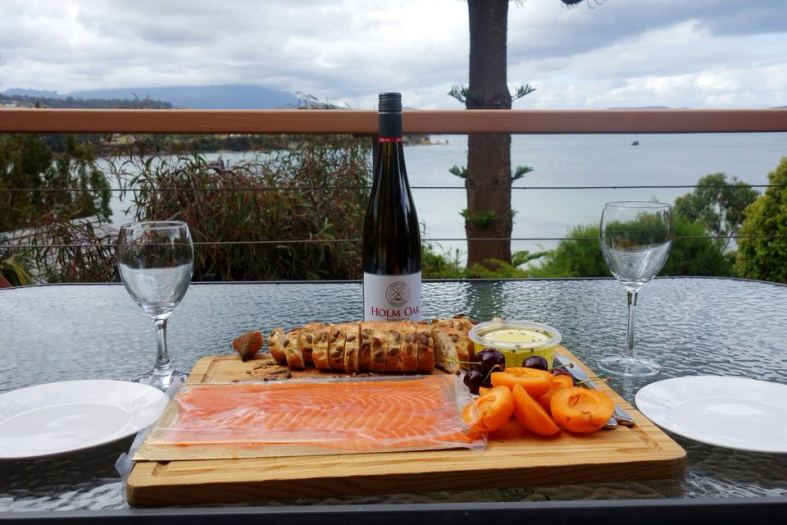
Our favorite meal
- Overlooking the North West BAy
- Front sitting room
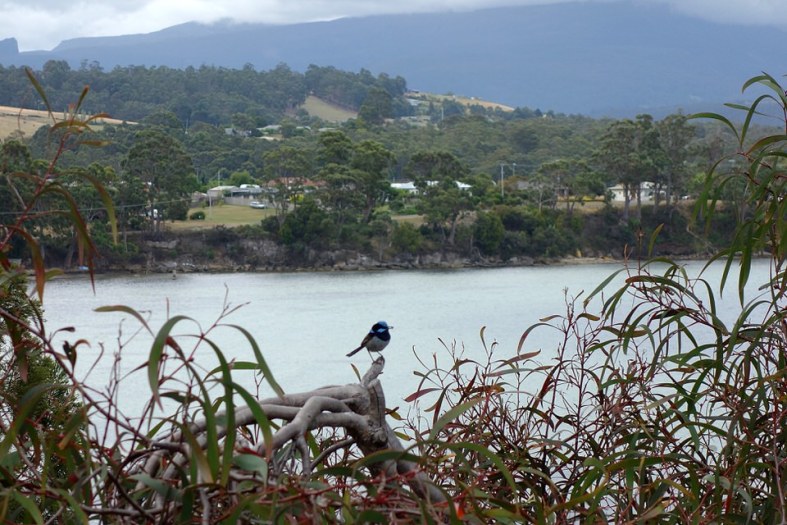
Fairy Wren
Fairy Wren
Fairy Wrens, common in Tasmania, are usually found in social groups, normally one brightly colored male and several females and young birds. In the first picture the cyan blue of the male is easy to spot. Do you see two other less colorful wrens with him?
I’ve included the second picture so that we can play spot the bird. Hint: Don’t look for blue. Reminder: Just click on any picture to open to a larger format.
- Superb Fairy Wren – Malurus cyaneus –
Huon Valley
The Huon region is a major producer of apples, among other things. Making apple cider from apples seems like a good thing to do. We visit a few places along the way.
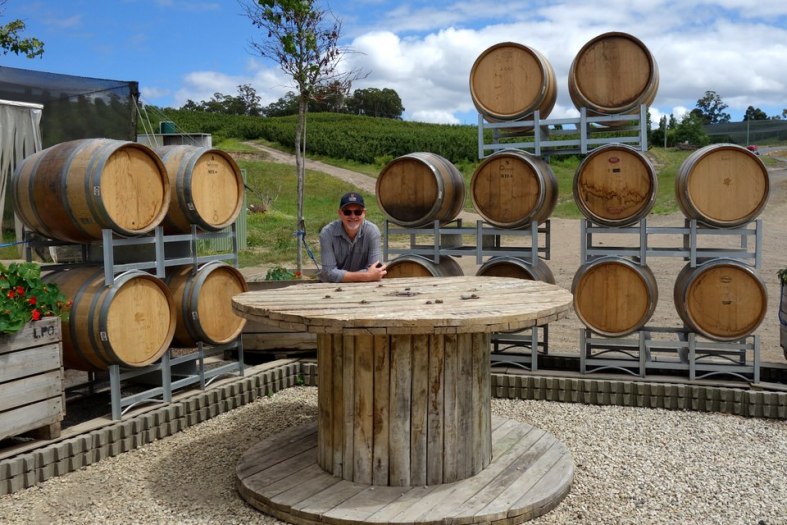
At Pagan Cider
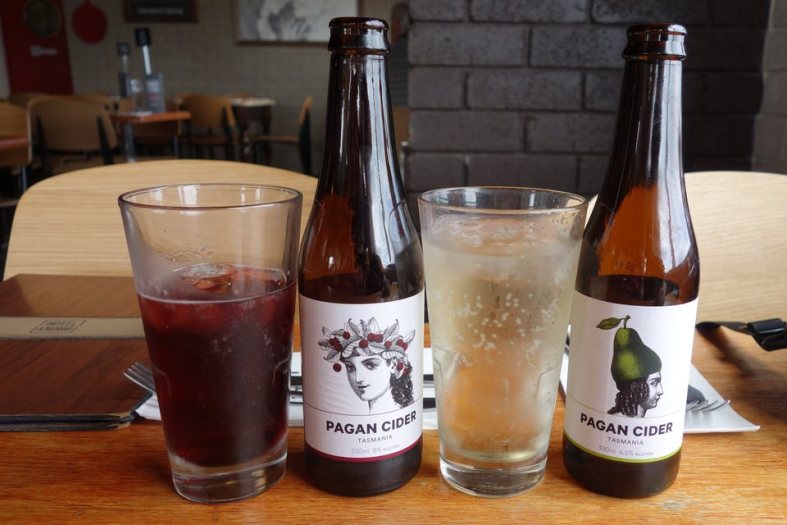
Pagan Cider
- Willie Smith for great apple pie
- Apple Shed
- Willie Smith Organic Cider, Huon Valley Tas
The scenery in this region is very rural farming area, alongside the ocean. We enjoy exploring this region.
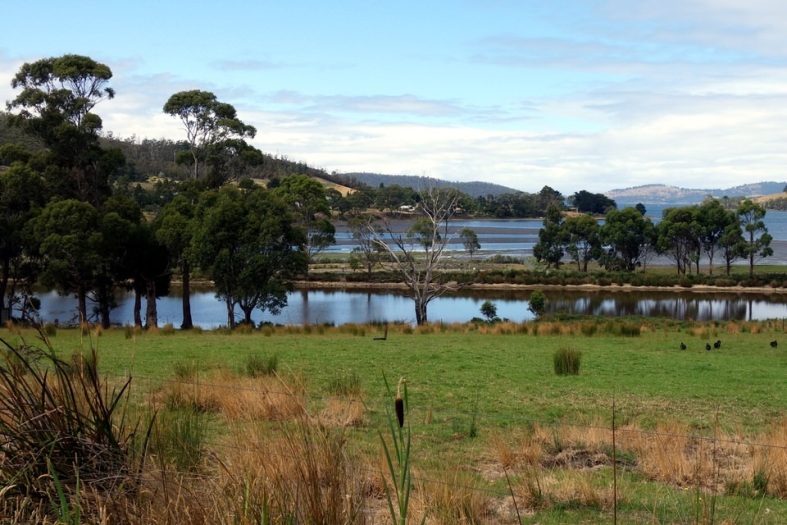
Huon Valley

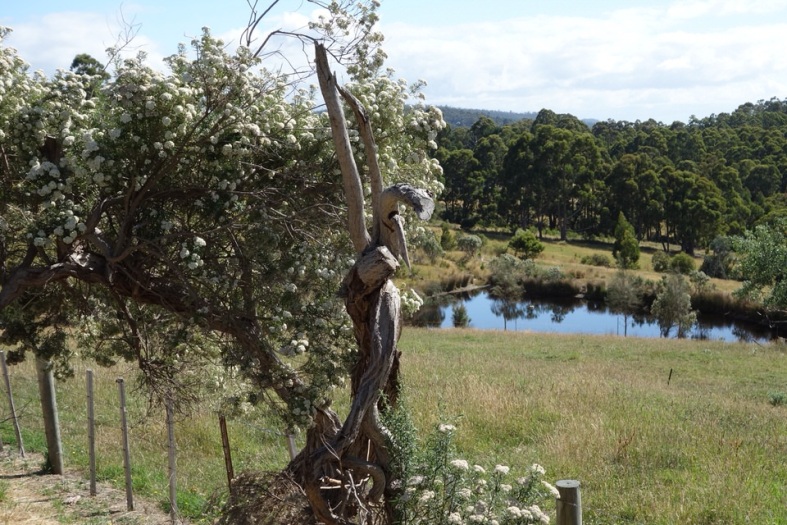


Ninepin Point Marine Reserve
We pulled over to take in the views over the water, and discovered that this was a point of interest.
We read the following on an information sign there: “The golden colored waters here are created by tannin stained freshwater flowing down from the Huon River from the south-west forests of the Tasmanian Wilderness World Heritage Area. This phenomenon creates an unusually dark environment in relatively shallow waters, which means that a treasure trove of marine plants and animals, generally living in much deeper waters, can easily be seen by snorkelers and Scuba divers.” Although we didn’t snorkel we were able to easily see colorful and interesting marine plants.
- Tasmania 567
Tahune Air Walk
It is quite the drive in on a road that is barely upgraded from a logging road, in my opinion, but we are determined to visit the Tahune AirWalk in this forestry region, which overlooks the Huon and Picton River.
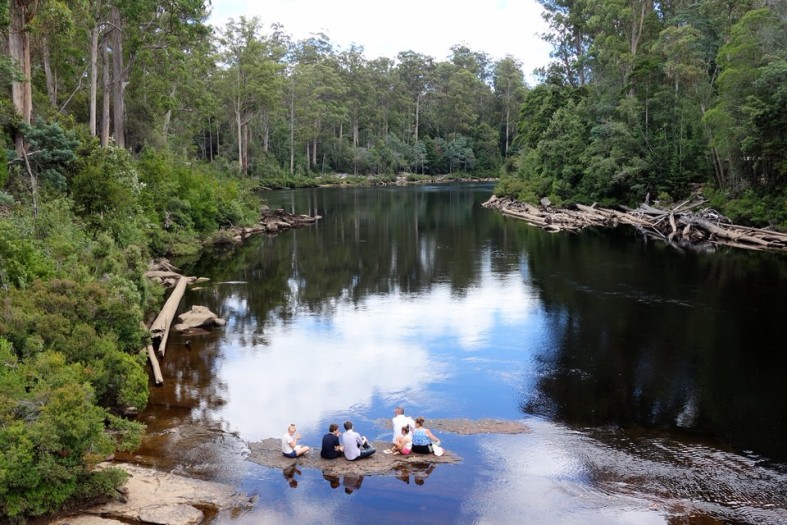

This tall eucalypt has thick fibrous bark which helps it survive mild bushfires. Its timber is used for many different purposes.
Tahune Airwalk is 619 metres in length, average height above the ground 20 metres and 37.5 metres above the forest floor at the end of the canteilever and 48 metres above the river. It can withstand 180 km/hour winds, maximum weight on the cantilever, 10 tonnes which is equivalent to 120 crowded people or 12 baby elephants. Right now it is only withstanding the weight of one Ed.
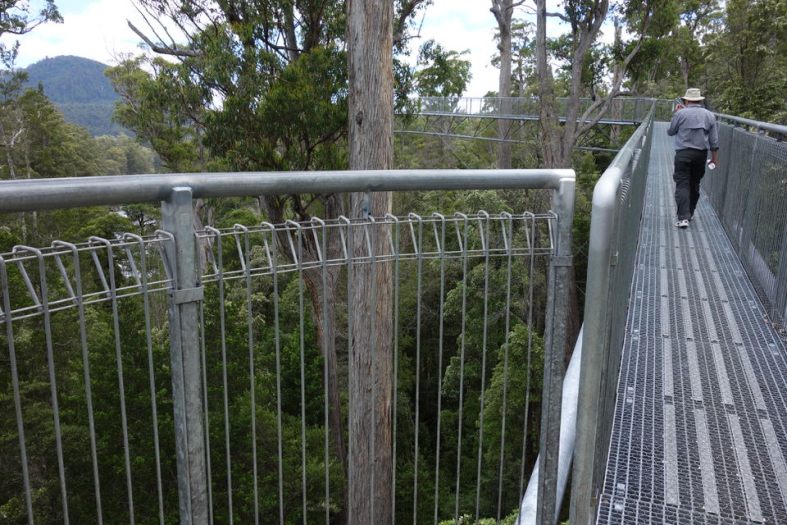
Tahune Airwalk

Tahune Airwalk cantilever
- Looking way down
- Swinging bridges
Bruny Island
Day 2 in this region: We catch the ferry at Kettering to go across to Bruny Island.
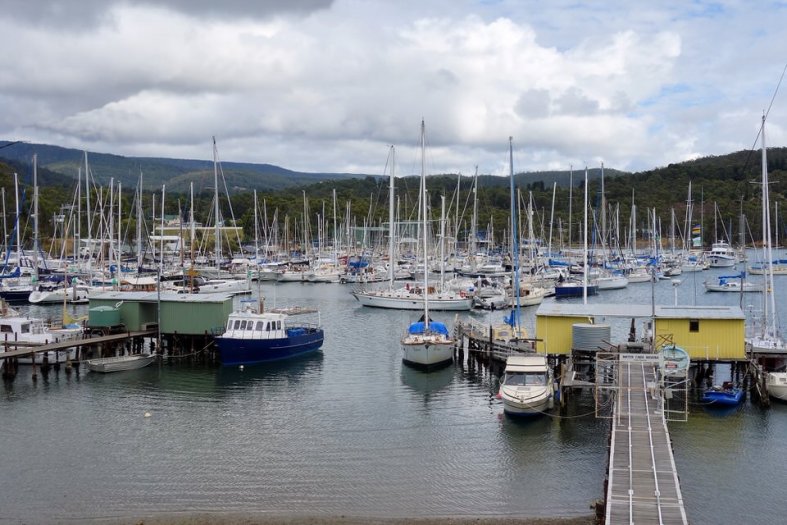
Bruny Island Ferry place
Bruny is home to artisanal producers specializing in oysters, cheese and chocolate. We are keen to go to Bruny Island Cheese company. On our Tasmanian holiday we have enjoyed several of their cheeses.
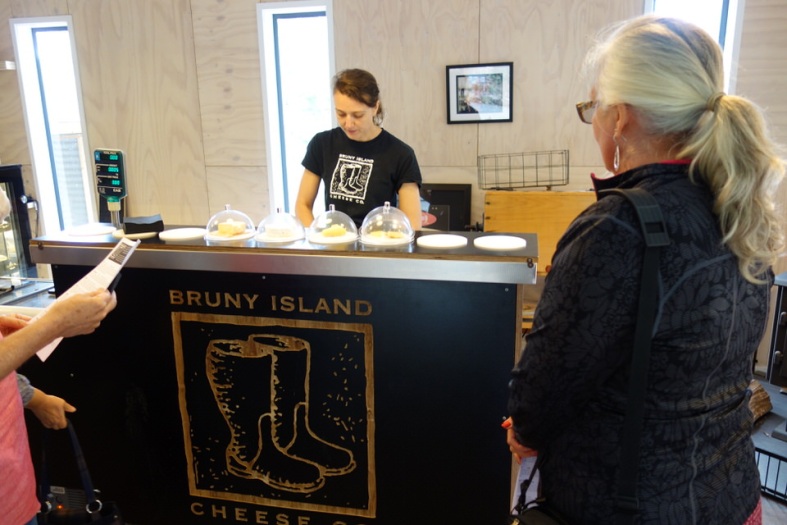
Bruny Island Cheese Company
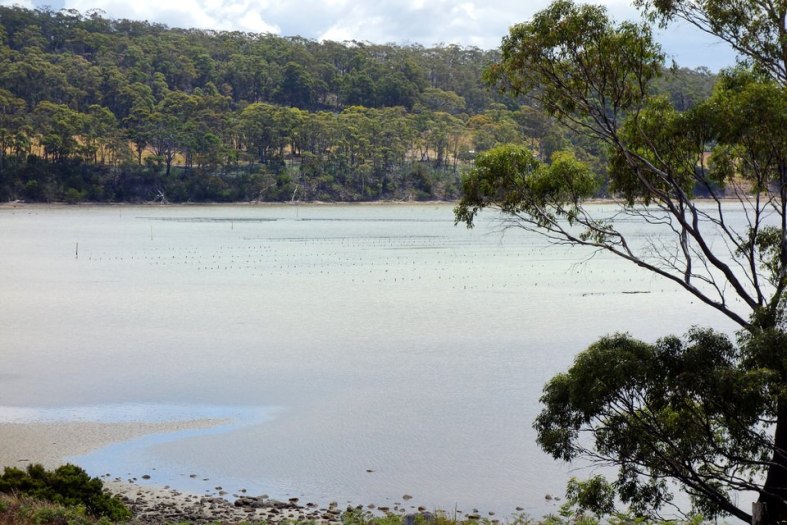
Oyster Beds
The Neck
Bruny Island doesn’t really have a north and south island, it just kinda looks that way because of the narrow isthmus which separates north and south Bruny. We manage to find a place to park in the tiny parking lot so we can climb to the top of the lookout. From here we look across “The Neck,” as it is called, which separates the ocean into Adventure Bay on the east side and Isthmus Bay, on the west, which is separated from the main island of Tasmania by the d’Entrecastaux Channel.
There is an interesting optical illusion which makes it seem as if the water level is higher on one side – which, of course, it is not.
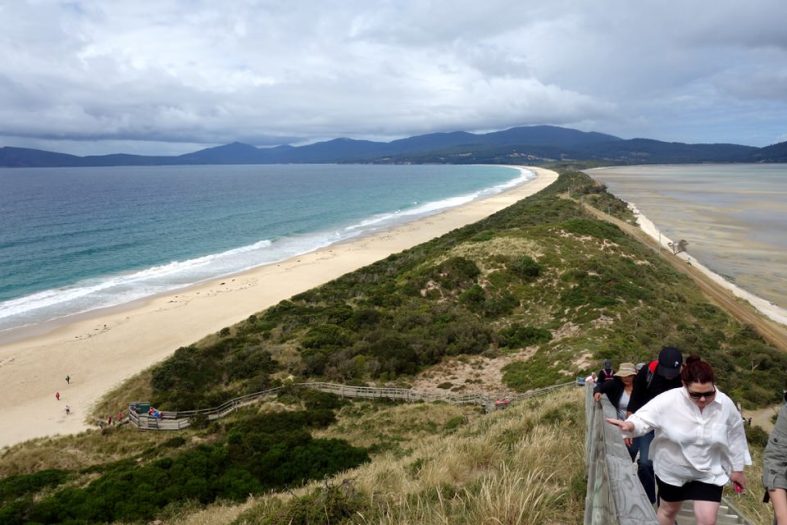
The Neck
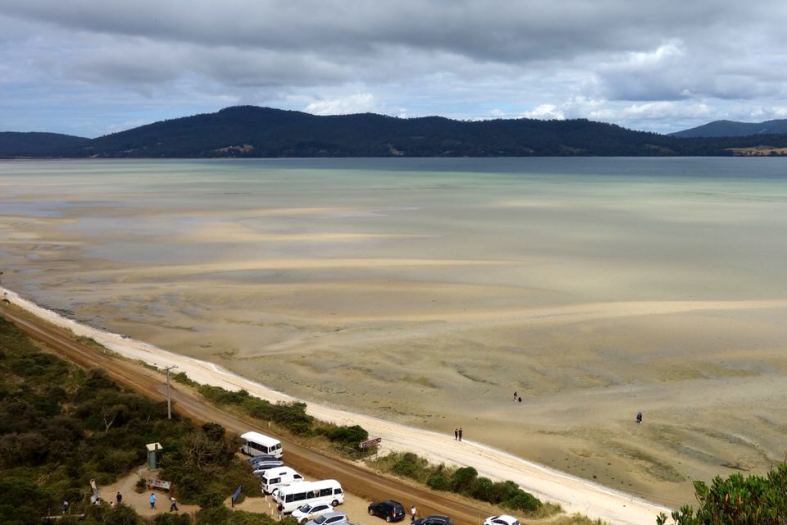
Looking to Isthmus Bay
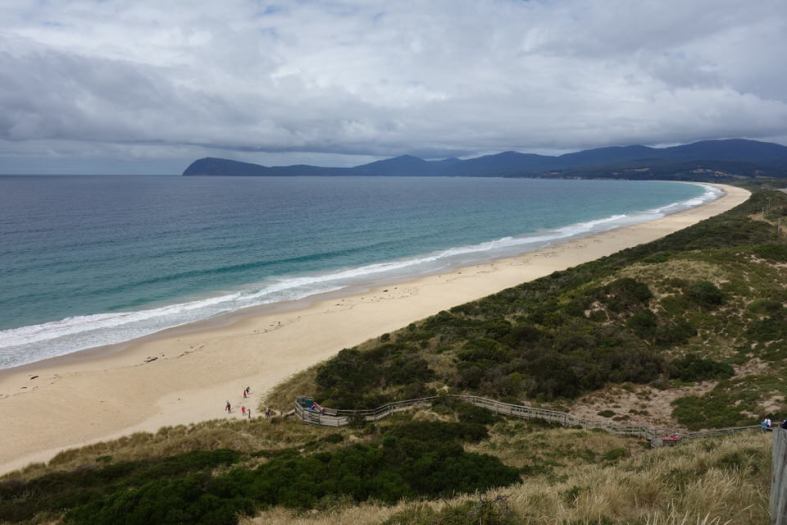
Looking to Adventure Bay
Little Penquins and Shearwaters
South Bruny is also home to some rare and endangered plants and animals. While at “The Neck” we explore the nesting grounds of the Little Penquin and the Shearwaters from the boardwalk constructed to protect this fragile habitat. Penquins and shearwaters share this same rookery at The Neck, which is unusual.
Short tailed Shearwater, Southern Hemisphere’s most numerous bird species, leave their sandy burrows and annually journey to the Arctic Circle and back, a 30,000 km journey that takes 6 months. When the adults return to the same 1 m long burrow, they clear it (or construct a new one) and lay a single egg.The parents spend the day at sea to feed the growing chick. After 3 weeks, the chick follows the parents out to sea.
The Eudyptula minor is the smallest of all penquins. Each morning it toddles to sea and returns home after dark. They are amazingly strong swimmers and can dive to 60 metres seeking food.
The Little Penquin or Fairy Penquin is a fast swimmer underwater. Adult birds weigh about 1 kg and grow to 40 cm., living for 7 years.

Boardwalk at The Neck
- Burrows at The Neck
- Nest
Another interesting story is that Adventure Bay is where Captain William Bligh came ashore for water and provisions before heading off for his ill-fated mutiny in the South Pacific. Of course, here as in almost every region of Australia, it is the explorations of Captain Cook that capture the public’s interest and attention. Memorials to Captain Hook abound everywhere.
We have a fabulous lunch at the simple Hotel Bruny and explore the shoreline before we return for our final night in Tasmania.
- Cute beer mug
- shoreline at Alonnah
- Evidence of abundant sea life
- Alonnah
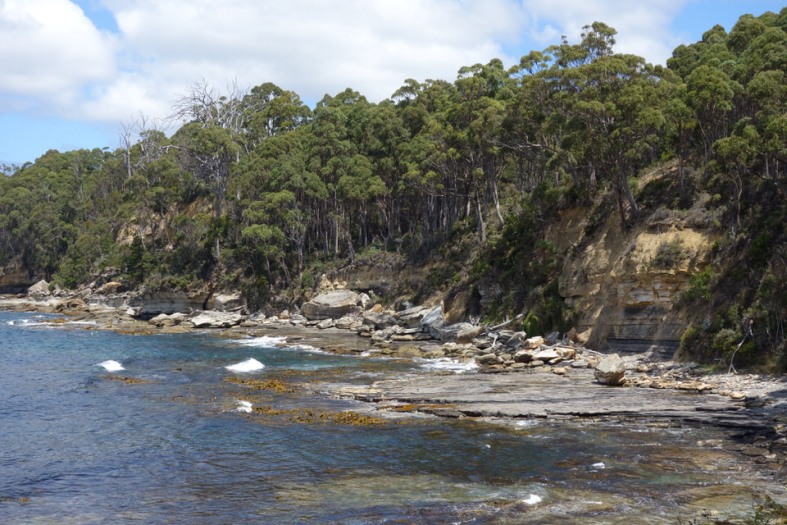
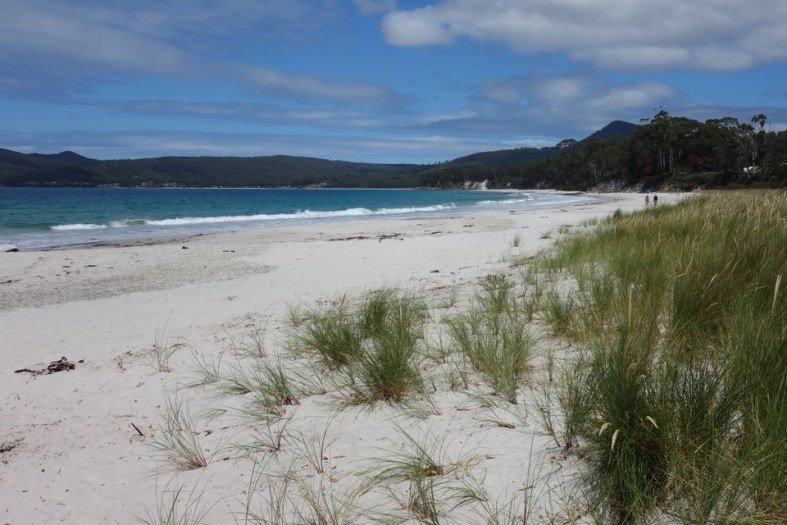
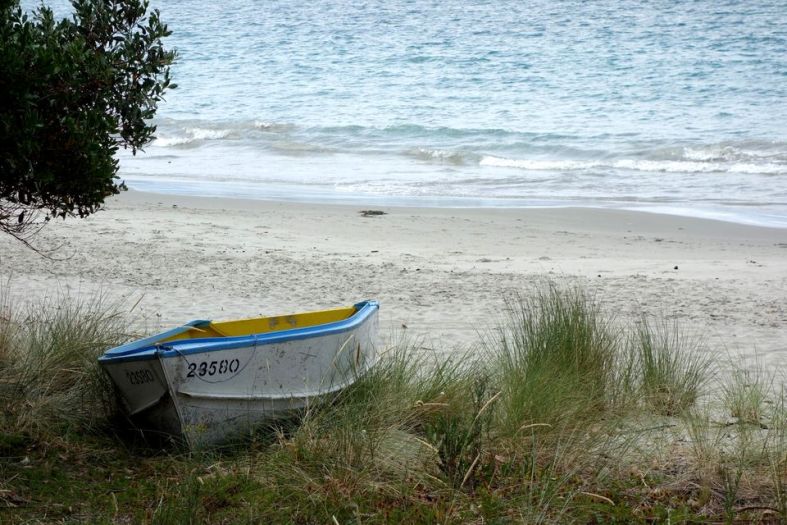
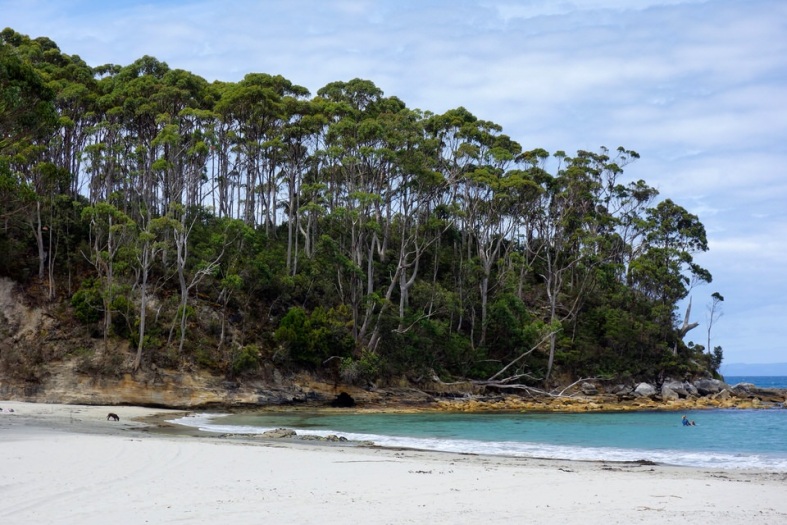
Goodbye to Tasmania
We have spent a lot of hours driving around Tasmania. We have managed to avoid any collisions with man or animal – amazing considering the amount of roadkill that we encountered in the northern parts of Tasmania. But what was really interesting was that I twice had to stop the car on the highway to avoid running over an Echidna. No one wants to run these little guys over because they are a very rare and interesting animal.
Echidna
The ant eating Echidna (along with the Platypus) is an egg laying mammal (monotreme) and the species is considered to have lived in the rainforest for at least 130 million years, making it a holdover from the dinosaur era. It has the ability to detect electrical impluses in the muscles of small insects. Wow!
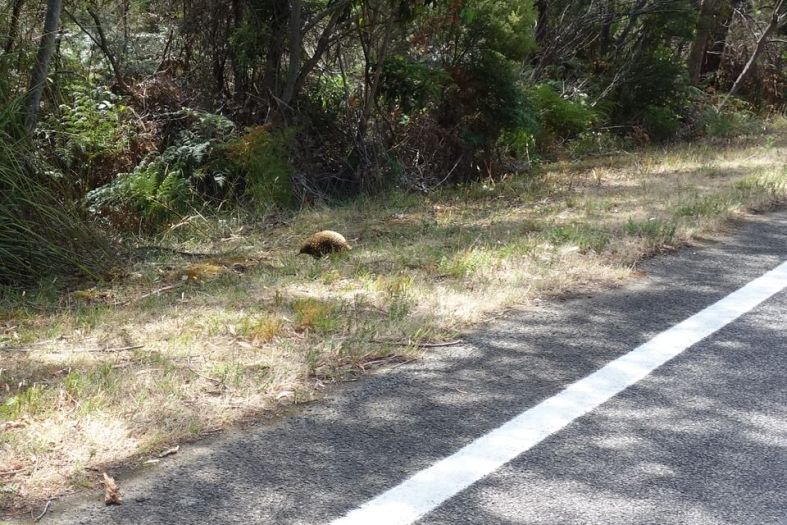
Echidna
It is goodbye to Tasmania for now. We are so happy to have visited you.
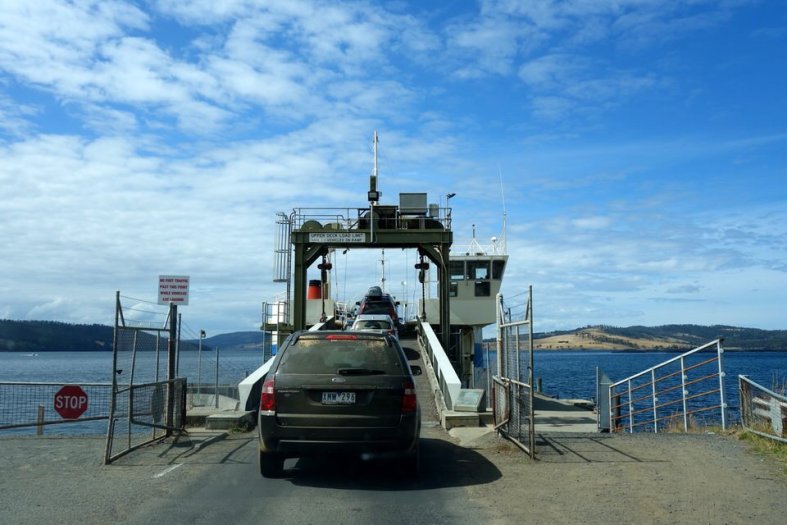
Boarding the ferry for our return.


























You have enchanted me greatly! Tasmania is now a must see on my list before the end of my days. Thanks so much Di!
LikeLike
Oh Diane – That is one of the things that I like about you. You are such a traveler at heart. Isn’t the world such an interesting place? It is full of the richness of God’s glory. Man can either honor that or abuse it. I enjoy seeing places where mankind has respected the beauty of nature. Hope that you do make it to Tasmania. Until then, happy travels.
LikeLike